The Ultimate Collection of Elementor Templates for Marketing Agencies
In the fast-paced world of digital marketing, having an exceptional website is crucial for your agency’s success. It’s more than just a digital brochure—it’s your brand’s online personality, a client magnet, and a showcase of your expertise. Elementor is a game-changer in this arena, providing tools to craft visually stunning sites effortlessly. This post will dive into why free Elementor templates are worth considering, how to select the best one for your agency, and tips to make your site truly stand out.
Why Use Free Elementor Templates?
Budget-friendly : Free marketing agency Elementor templates are a savvy choice for keeping costs down while still achieving a professional-looking website. Instead of investing heavily in custom designs or pricey developers, you can leverage these high-quality, no-cost templates to build a site that looks great and functions well.
Efficient : Time is of the essence, and free Elementor website templates for marketing streamline the development process. With these templates, you can quickly set up your site and redirect your energy towards creating compelling content and engaging with clients.
Professional quality : The “free” label doesn’t mean you have to sacrifice quality. Many of these best free Elementor templates for marketing agencies are crafted by experienced designers and offer sleek, modern designs. They come with responsive layouts and eye-catching features that help your site make a strong impression.
How to Choose the Right Template
Match your niche : Consider the specific focus of your agency when choosing a template. Whether you specialize in digital marketing, creative design, or consulting, select a template that reflects your industry. This ensures that your site resonates with your target audience.
Feature check : Look closely at what the template offers. Does it include customizable sections, responsive design, and the right integrations? Opt for marketing agency website templates Elementor that align with your needs—whether it’s showcasing a portfolio, displaying client testimonials, or outlining service offerings.
Brand alignment : A template is a starting point. Customize it to reflect your brand’s personality. Adjust colors, fonts, and layouts so your site becomes a true representation of your agency’s identity.
Tips for Using Elementor Templates
Customization options : Elementor provides extensive customization features to refine your template. Use the drag-and-drop editor to rearrange elements and personalize the design. This way, your site won’t just look good—it’ll look distinctly yours.
Content matters : After setting up your template, focus on adding engaging content. Make sure your text, images, and videos are relevant and compelling. Excellent content helps captivate visitors and convert them into clients.
SEO savvy : Don’t forget about SEO. Elementor offers built-in features and plugins to help you optimize your site’s meta tags, headings, and images. A well-optimized site improves your search engine ranking and attracts more traffic.
Conclusion
To wrap up, free digital marketing agency Elementor templates offer a cost-effective, efficient, and high-quality solution for creating a standout website. By choosing the right template, customizing it to match your brand, and utilizing Elementor’s powerful tools, you can build a site that truly shines. Ready to enhance your agency’s online presence? Explore these templates today, and for more insights and updates, subscribe to our newsletter or visit our website.
See also
Bosa Digital Marketing

Elementory Agency

Business Directory Elementor

SEO Agency Lite

Business Note

SKT UI UX

Teczilla Digital Agency

Blockfold

Designer Services

Darkbiz Child

Web Designer Elementor

Business School

Bosa Marketing

Free SAAS WordPress Theme

FotaWP

Elemento Startup

Advance Startup

PressBook Blog

Corpiva

Elemento Business

The post The Ultimate Collection of Elementor Templates for Marketing Agencies appeared first on CSS Author.
I want to use the seekbar to zoom in and out of the camera from zxing
I want to use the seekbar to zoom in and out of the camera from zxing
How Woo merchants can use NFTs
WooCommerce in 2024 and beyond: Roadmap update
Calm Down, Cloud’s Not THAT Different!
I was at a tech conference recently – one built by (and for) networking professionals – chatting with another attendee about the usual mix of news, tech challenges, and hobbies when the conversation took a sudden and sobering turn:
“I guess I have a lot more time for side quests these days. I got laid off a couple of months back and can’t seem to land even a solid conversation, let alone a job offer. I thought it would be easier than this.”
Rethinking The Role Of Your UX Teams And Move Beyond Firefighting
In my experience of building and supporting UX teams, most of them are significantly under-resourced. In fact, the term "team" can often be a stretch, with many user experience professionals finding themselves alone in their roles.
Typically, there are way more projects that impact the user experience than the team can realistically work on. Consequently, most UX teams are in a constant state of firefighting and achieve relatively little in improving the overall experience.
We can complain about being under-resourced as much as we want, but the truth is that our teams are unlikely to grow to a size where we have sufficient staff to address every detail of the experience. Therefore, in this post, I want to step back and reconsider the role of user experience professionals and how UX teams can best improve the user experience of an organization.
What Is The Role Of A UX Professional?There is a danger that as UX professionals, we focus too much on the tools of our trade rather than the desired outcome.
In other words, we tend to think that our role involves activities such as:
- Prototyping
- User research
- Interface design
- Testing with users
But these are merely the means to an end, not the end goal itself. These activities are also time-consuming and resource-intensive, potentially monopolizing the attention of a small UX team.
Our true role is to improve the user experience as they interact with our organization's digital channels.
The ultimate goal for a UX team should be to tangibly enhance the customer experience, rather than solely focusing on executing design artifacts.
This reframing of our role opens up new possibilities for how we can best serve our organizations and their customers. Instead of solely focusing on the tactical activities of UX, we must proactively identify the most impactful opportunities to enhance the overall customer experience.
Changing How We Approach Our RoleIf our goal is to elevate the customer experience, rather than solely executing UX activities, we need to change how we approach our role, especially in under-resourced teams.
To maximize our impact, we must shift from a tactical, project-based mindset to a more strategic, leadership-oriented one.
We need to become experience evangelists who can influence the broader organization and inspire others to prioritize and champion user experience improvements across the business.
As I help shape UX teams in organizations, I achieve this by focusing on four critical areas:
- The creation of shared resources,
- The provision of training,
- The offering of consultative services and
- The building of community.
Let’s explore these in turn.
The Creation Of Resources
It is important for any UX team to demonstrate its value to the organization. One way to achieve this is by creating a set of tangible resources that can be utilized by others throughout the organization.
Therefore, when creating a new UX team, I initially focus on establishing a core set of resources that provide value and leave an impressive impression.
Some of the resources I typically focus on producing include:
- User Experience Playbook
An online learning resource featuring articles, guides, and cheatsheets that cover topics ranging from conducting surveys to performing AB testing. - Design System
A set of user interface components that can be used by teams to quickly prototype ideas and fast-track their development projects. - Recommended Supplier List
A list of UX specialists that have been vetted by the team, so departments can be confident in hiring them if they want help improving the user experience. - User Research Assets
A collection of personas, journey maps, and data on user behavior for each of the most common audiences that the organization interacts with.

These resources need to be viewed as living services that your UX team supports and refines over time. Note as well that these resources include educational elements. The importance of education and training cannot be overstated.
The Provision Of Training
By providing training and educational resources, your UX team can empower and upskill the broader organization, enabling them to better prioritize and champion user experience improvements. This approach effectively extends the team’s reach beyond its limited internal headcount, seeking to turn everybody into user experience practitioners.
This training provision should include a blend of 'live' learning and self-learning materials, with a greater focus on the latter since it can be created once and updated periodically.
Most of the self-learning content will be integrated into the playbook and will either be custom-created by your UX team (when specific to your organization) or purchased (when more generic).

In addition to this self-learning content, the team can also offer longer workshops, lunchtime inspirational presentations, and possibly even in-house conferences.
Of course, the devil can be in the details when it comes to the user experience, so colleagues across the organization will also need individual support.
The Offering Of Consultative Services
Although your UX team may not have the capacity to work directly on every customer experience initiative, you can provide consultative services to guide and support other teams. This strategic approach enables your UX team to have a more significant impact by empowering and upskilling the broader organization, rather than solely concentrating on executing design artifacts.
Services I tend to offer include:
- UX reviews
A chance for those running digital services to ask a UX professional to review their existing services and identify areas for improvement. - UX discovery
A chance for those considering developing a digital service to get it assessed based on whether there is a user need. - Workshop facilitation
Your UX team could offer a range of UX workshops to help colleagues understand user needs better or formulate project ideas through design thinking. - Consultancy clinics
Regular timeslots where those with questions about UX can “drop in” and talk with a UX expert.
But it is important that your UX team limits their involvement and resists the urge to get deeply involved in the execution of every project. Their role is to be an advisor, not an implementer.
Through the provision of these consultative services, your UX team will start identifying individuals across the organization who value user experience and recognize its importance to some degree. The ultimate goal is to transform these individuals into advocates for UX, a process that can be facilitated by establishing a UX community within your organization.
Building A UX Community
Building a UX community within the organization can amplify the impact of your UX team's efforts and create a cohesive culture focused on customer experience. This community can serve as a network of champions and advocates for user experience, helping spread awareness and best practices throughout the organization.
Begin by creating a mailing list or a Teams/Slack channel. Using these platforms, your UX team can exchange best practices, tips, and success stories. Additionally, you can interact with the community by posing questions, creating challenges, and organizing group activities.

For example, your UX team could facilitate the creation of design principles by the community, which could then be promoted organization-wide. The team could also nurture a sense of friendly competition by encouraging community members to rate their digital services against the System Usability Scale or another metric.
The goal is to keep UX advocates engaged and advocating for UX within their teams, with a continual focus on growing the group and bringing more people into the fold.
Finally, this community can be rewarded for their contributions. For example, they could have priority access to services or early access to educational programs. Anything to make them feel like they are a part of something special.
An Approach Not Without Its ChallengesI understand that many of my suggestions may seem unattainable. Undoubtedly, you are deeply immersed in day-to-day project tasks and troubleshooting. I acknowledge that it is much easier to establish this model when starting from a blank canvas. However, it is possible to transition an existing UX team from tactical project work to UX leadership.
The key to success lies in establishing a new, clear mandate for the group, rather than having it defined by past expectations. This new mandate needs to be supported by senior management, which means securing their buy-in and understanding of the broader value that user experience can provide to the organization.
I tend to approach this by suggesting that your UX team be redefined as a center of excellence (CoE). A CoE refers to a team or department that develops specialized expertise in a particular area and then disseminates that knowledge throughout the organization.
This term is familiar to management and helps shift management and colleague thinking away from viewing the team as UX implementors to a leadership role. Alongside this new definition, I also seek to establish new objectives and key performance indicators with management.
These new objectives should focus on education and empowerment, not implementation. When it comes to key performance indicators, they should revolve around the organization's understanding of UX, overall user satisfaction, and productivity metrics, rather than the success or failure of individual projects.
It is not an easy shift to make, but if you do it successfully, your UX team can evolve into a powerful force for driving customer-centric innovation throughout the organization.
Chris’ Corner: Variables
CSS has a feature called Custom Properties. You know this.
html {
--brandColor: red;
}
.card {
border-color: var(--brandColor);
h2 {
color: var(--brandColor);
}
}People also — somewhat interchangeably — refer to these as CSS variables. Somehow, that doesn’t bother me, even though I tend to be a stickler about naming things. For instance, there is no such thing as a frontend developer. There are front-end developers who focus on the front end.
But here, the names feel like they make sense despite me not exactly nailing down how I like to see them being used. Like, Custom Property feels right. When I create --something, that’s used as a property in CSS but I just made up the name myself. It’s a… custom… property. And then I use it later with the var() function, which obviously stands for “variable”, because now this custom properties value has turned into a dynamic variable. So calling what is happening here a “CSS variable” seems entirely fine.
OK moving on I guess we need to talk about CSS variables for an entire issue.
Just the other week I was trying to see if there was a clean way to ask CSS what the value of cos(25deg) was. I feel like I got so close, trying both setting the value to a property that takes a unitless number and typing the variable first, but I couldn’t quite get it. There is a lesson here about never giving up, as Bramus proved by giving it a fresh college try and proving it absolutely can be done.
You totally do need to type variables sometimes, the 99% use case is allowing them to be animated which the browser can (mostly) on do if it knows the type. You could also consider it a form of “type safety” so hardcore TypeScript nerds will probably like it.
Above is about as niche of a situation as you can get.
What are CSS variables actually useful for?
I like thinking of the most common use case for things. The most common use case for grid is to put two things side by side. The most common use case for a <dialog> is an important confirm/cancel question. The most common use case for a popover is a footnote. The most common use case for SVG is a logo. For CSS variables, it’s a brand color.
Even on a fairly simple website, I’d bet there is one particular important color that you end up having to set a number of times. Using a variable for it just keeps things DRY and allows you to tweak it easily. That’s exactly the code I started this post out with. But variables are more and more powerful. Just that --brandColor is tweakable without changing it…
footer {
background: color-mix(in oklch, var(--brandColor), black 20%);
}Now if we tweak that brand color, we’re tweaking the tweaks (man).
Even wilder to me is that setting one custom property (see how effortless I can switch the term back and forth?) can have effects all over the place. This is thanks to container style queries.
Consider code like this:
@container style(--darkBackground) {
> * { color: white; }
}Now if --darkBackground is set (to any value at all) on any element, all direct children of it have white text. Support for this is pretty limited, so it’ll be a while until any of us have any strong understanding of how this will affect how we write CSS. To me, this is similar to :has() in how a change anywhere on the page can affect changes elsewhere in (I’d argue) unexpected ways. Powerful ways. Maybe useful ways. But unexpected ways. CSS used to be a pretty darn top-down language and that’s changing.
How about a feature with such limited support there… isn’t any. One of those things is the if() statement (woah), which is only useful for testing CSS variables. I’m a fan, but let’s not get all into that here. Another Lea Verou post is Proposal: CSS Variable Groups. Check it:
:root {
--color-green: {
100: oklch(95% 13% 135);
200: oklch(95% 15% 135);
/* ... */
900: oklch(25% 20% 135);
};
}This turns into variables that are used like var(--color-green-200). Such a chill way to declare a set of variables without so much repetition. It’s just for authors, but that’s fine I think. CSS variables I feel like exist mostly in a post-pre-processing era (heh), so even though we’d probably abstract this with a loop or whatever in the past, we don’t have that anymore, so need syntactical help.
Don’t Get Hacked! Essential Cybersecurity Tips You Need To Know
Technology in the digital age has revolutionized our lives. However, this convenience comes with a growing threat: cybercrime. Malicious actors, ranging from petty thieves to sophisticated cybercriminals, operate online, seeking to exploit vulnerabilities and steal sensitive information, financial data, and even identities.
From online banking and shopping to social media and remote work, the internet has become an essential part of our daily routines. What does it mean when your online identity is turned against you? Or when you need to prove your own identity to regain control of tools you previously assumed were solely there to make your life easier?
Bulk Data Inserts – From File or Memory
Recently made a decision for an app I'm working on to accumulate data in batches AND THEN to insert it into the database with one statement rather than adding 1,000 records through one thousand separate inserts.
Is this done better through file or memory? If I write the segments of the bulk-insert statement to a file and then execute from the file, the security people will complain and say that I'm writing self-modifying code.
Yet, if I try to assemble the individual segments in memory, I run the risk that one of my end users will try to feed it too much data at once and that the thing will choke.
What's the lessser of two evils here? I think I might just be better off long term equipping the software to detect big batches and to break them up followed by execution from memory?
Creating a Cohesive User Experience Using HSL Colors in CSS
We all know what importance colors hold in anything, whether it’s a website layout, image, video, or any other graphical element. In essence, color is a subjective experience that results from the interaction between light, the eye, and the brain. Adding colors to the website gives a new life to the whole layout and graphical elements. Nobody likes to visit web pages with white, black, and gray colors on them. Colors make the elements look more realistic and catchy to the human eye.
Not just theoretically, psychology also comes into play when we use colors on websites. It has been scientifically proven that a specific set of colors triggers particular emotions in the human brain, such as autumn colors like orange and yellow representing joy or happiness, red color to festive seasons, and blue viewed as calm and trustworthy. Besides, you must have noticed that many food companies often use red and yellow on their websites, pharmaceutical companies tend to use green on their sites, fitness companies sometimes use orange, and so on.
14 Must-have free WooCommerce extensions for your storefront
Python – Optimization
Hey Gang!
I'm hitting a point with my (python/mysql/linux) app for processing large amounts of network records where I need to make a design decision.
I definitely want my app to have high performance. Because optimization as a skill set is so rare there is no reason not to employ it if you have it. No one can copy you because innovation is not what most tech start-ups do and they grew up coding on pay-per-flop architectures.
My methodology is to get the data into the database and to let the database do database things. I got very good advice here at Dani Web to switch to MySQL. This has been a tremendous time saver!
And yet some things I can rely upon python and python alone to do.
I am trying to minimize those things. For example, I plan to hand-write warehousing drivers in ANSI-C to get the data into the database without python.
And yet not everything can be accomplished in C.
Do any of you have any general advice about python optimization? I have tried all of the obvious things like optimizing the interpreter, things that have always worked with perl or ruby. Python has been less than cooperative.
Which is the best tutorial to learn Java DSA?
Hello !!
"I want to learn Java data structures and algorithms (DSA). I have recently learned Java object-oriented programming (OOP). Suggest me best tutorials for learning.
Creating Magic on Canvas: Essential Photoshop Brushes for Drawing
Importance of Photoshop Brushes in Drawing
In the realm of digital art, Photoshop brushes are the unsung heroes that bring illustrations to life. Whether you’re sketching, painting, or adding intricate details, the right brush can be a game-changer in achieving the desired effect.
Key Reasons to Value Photoshop Brushes :
- Versatility : They cater to various styles, from realistic portraits to abstract compositions.
- Control & Precision : Fine-tune your artwork with brushes that mimic traditional mediums like pencil, ink, or paint.
- Time Efficiency : Quick adjustments and effects expedite the creative process without compromising quality
Overview of the Essential Brushes Covered
This article will delve into four essential categories of brushes that every aspiring artist should have in their arsenal:
- Pencil Brushes : Perfect for sketching and detailed drawing.
- Paint Brushes : Ideal for vibrant and rich paintings.
- Texture Brushes : For adding depth and incredible details.
- Special Effects Brushes : Tools for creating stunning lighting and atmosphere.
Get ready to transform your digital creations with these indispensable tools!
Pencil Brushes
Characteristics and Usage
When it comes to Photoshop brushes for drawing, pencil brushes are often the first choice for artists seeking to replicate the traditional pencil look. These brushes are designed to mimic the texture and feel of graphite on paper.
Characteristics of Pencil Brushes :
- Pressure Sensitivity : They react dynamically to the pressure applied, allowing for varied line thickness.
- Textured Variations : Many offer a range of textures, from smooth to rough, to reflect different pencil types.
- Opacity Control : Users can easily adjust opacity to create subtle gradations.
Ideal for everything from quick sketches to detailed illustrations, pencil brushes are essential tools for digital artists.
Tips for Realistic Pencil Drawing
To elevate your digital pencil drawing, consider these practical tips:
- Layering : Use multiple layers to build depth and dimension gradually.
- Vary Brush Sizes : Combine different brush sizes for a mix of fine details and broader strokes.
- Blend with Smudge Tool : Smooth transitions can be achieved using the smudge tool to mimic the pencil blending technique.
With these techniques, you’ll be on your way to creating stunning, realistic pencil drawings in Photoshop!
Paint Brushes
Different Types of Paint Brushes
Once you’ve immersed yourself in the world of pencil brushes, it’s time to explore the vibrant universe of paint brushes available in Photoshop. These brushes are designed to emulate a range of traditional painting styles.
Types of Paint Brushes :
- Round Brushes : Perfect for detail work and fine lines.
- Flat Brushes : Excellent for broad strokes, filling in large areas, or creating sharp edges.
- Fan Brushes : Great for textures like foliage or creating unique patterns.
- Dry Brush : Mimics the look of a dry paint application, adding grit and depth to your artwork.
Each type has its own unique effect, allowing artists to express their creativity in various ways.
Techniques for Painting in Photoshop
To master painting in Photoshop, consider adopting these effective techniques :
- Layering : Build colors gradually by working in multiple layers for depth and richness.
- Blending : Use a soft round brush or smudge tool to seamlessly blend colors.
- Wet Brush Techniques : Explore brushes that simulate wet paint effects for fluid transitions.
With these skills in your toolkit, you’ll bring your digital canvas to life, one brushstroke at a time!
Texture Brushes
Adding Depth and Detail
As we venture further into the world of Photoshop brushes for digital art, texture brushes stand out as vital tools for artists keen on enhancing their work with depth and detail. These brushes are specially crafted to introduce intricate layers that mimic the varied surfaces of traditional art.
Benefits of Using Texture Brushes :
- Realism : They can add a tactile quality to illustrations, making them feel more authentic.
- Complexity : Introduce visual interest by layering textures, transforming flat designs into captivating pieces.
- Flexibility : Adaptable for all styles, from hyper-realistic portraits to abstract designs.
Texture brushes allow artists to breathe life into their creations by cleverly manipulating the feel and look of surfaces.
Creating Unique Effects with Texture Brushes
To really make your artwork pop, try these innovative techniques with texture brushes :
- Overlay Techniques : Use texture brushes as overlays to create backgrounds or subtle patterns.
- Color Variance : Experiment with different colors on textures to define lighting and shadow effects.
- Blend with Original Shapes : Combine textures with existing shapes for a cohesive design that feels organic.
By incorporating these strategies, you’ll unlock a treasure trove of unique effects that elevate your digital art to new heights!
Special Effects Brushes
Light and Shading Brushes
Transitioning from texture to special effects brushes, we dive into the realm of light and shading brushes that have the power to transform your artwork instantly. These brushes are designed to mimic various sources of light, creating stunning highlights and deep shadows.
Characteristics of Light and Shading Brushes :
- Dynamic Opacity : Adjusts with pressure, allowing for soft transitions from light to dark.
- Unique Shapes : Custom shapes that reflect different light effects, such as glows, streaks, or diffused light.
- Blendability : Easily blended with other colors to achieve a natural look.
These brushes can define your art, making it come alive with emotion and depth.
Creating Atmosphere and Mood
To establish mood and atmosphere in your compositions, consider these effective techniques:
- Layering Light : Use multiple layers of light brushes to simulate different times of day and create drama.
- Varying Color palettes : Integrate complementary colors to produce mood shifts, like warmth for a cozy scene or cooler tones for a melancholic vibe.
- Highlighting Focal Points : Draw attention by using high-contrast light around the central subject.
By mastering these techniques, you will convey powerful stories and emotions through your digital art, captivating your audience with every brushstroke!
Conclusion
Summary of Essential Photoshop Brushes
As we’ve explored throughout this article, Photoshop brushes are indispensable tools for any digital artist. From sketching to painting, texturing and applying special effects, the right brushes elevate your artwork from ordinary to extraordinary.
The Essential Brushes Covered:
- Pencil Brushes : Ideal for sketching and fine detailing.
- Paint Brushes : Perfect for vibrant, fluid painting techniques.
- Texture Brushes : Great for adding depth and intricate details.
- Special Effects Brushes : Essential for creating dynamic lighting and mood.
Each brush type plays a vital role in enhancing your overall artistic expression.
See also
Free Pencil Brushes for Photoshop

Free Marker Pen Brushes

Graphite Pencil Photoshop Brushes

Photoshop Illustration Brushes

Charcoal Pencil Brushes

Real Marker Brushes

Pencil Brushes

Sketch Brushes

Pencil Brushes for Photoshop

Free Paint Stroke Brushes

Essential Illustration Brushes

Pencil Brushes

Free Textures Brushes

Free Subtle Texture Brushes

Digital Paint Photoshop Brushes

Photoshop Paint Brushes

Fiber Brushes

Canvas Brushes

Digital Painting Photoshop Brush

Pencil Scribbles Photoshop Brushes

Painting Artistic Brushes

Dry Markers

Paint Stroke Brushes

Grunge Texture Brushes For Photoshop

Jess’s Acrylic Texture Brushes

Black and White HD Pencil Brushes

High Res Dry Brush Stroke Photoshop Brushes

Noise Texture Photoshop Brushes

Inky Photoshop Brushes

Ink Brushes for Photoshop

The post Creating Magic on Canvas: Essential Photoshop Brushes for Drawing appeared first on CSS Author.
Integrating Image-To-Text And Text-To-Speech Models (Part 1)
Audio descriptions involve narrating contextual visual information in images or videos, improving user experiences, especially for those who rely on audio cues.
At the core of audio description technology are two crucial components: the description and the audio. The description involves understanding and interpreting the visual content of an image or video, which includes details such as actions, settings, expressions, and any other relevant visual information. Meanwhile, the audio component converts these descriptions into spoken words that are clear, coherent, and natural-sounding.
So, here’s something we can do: build an app that generates and announces audio descriptions. The app can integrate a pre-trained vision-language model to analyze image inputs, extract relevant information, and generate accurate descriptions. These descriptions are then converted into speech using text-to-speech technology, providing a seamless and engaging audio experience.

By the end of this tutorial, you will gain a solid grasp of the components that are used to build audio description tools. We’ll spend time discussing what VLM and TTS models are, as well as many examples of them and tooling for integrating them into your work.
When we finish, you will be ready to follow along with a second tutorial in which we level up and build a chatbot assistant that you can interact with to get more insights about your images or videos.
Vision-Language Models: An IntroductionVLMs are a form of artificial intelligence that can understand and learn from visuals and linguistic modalities.
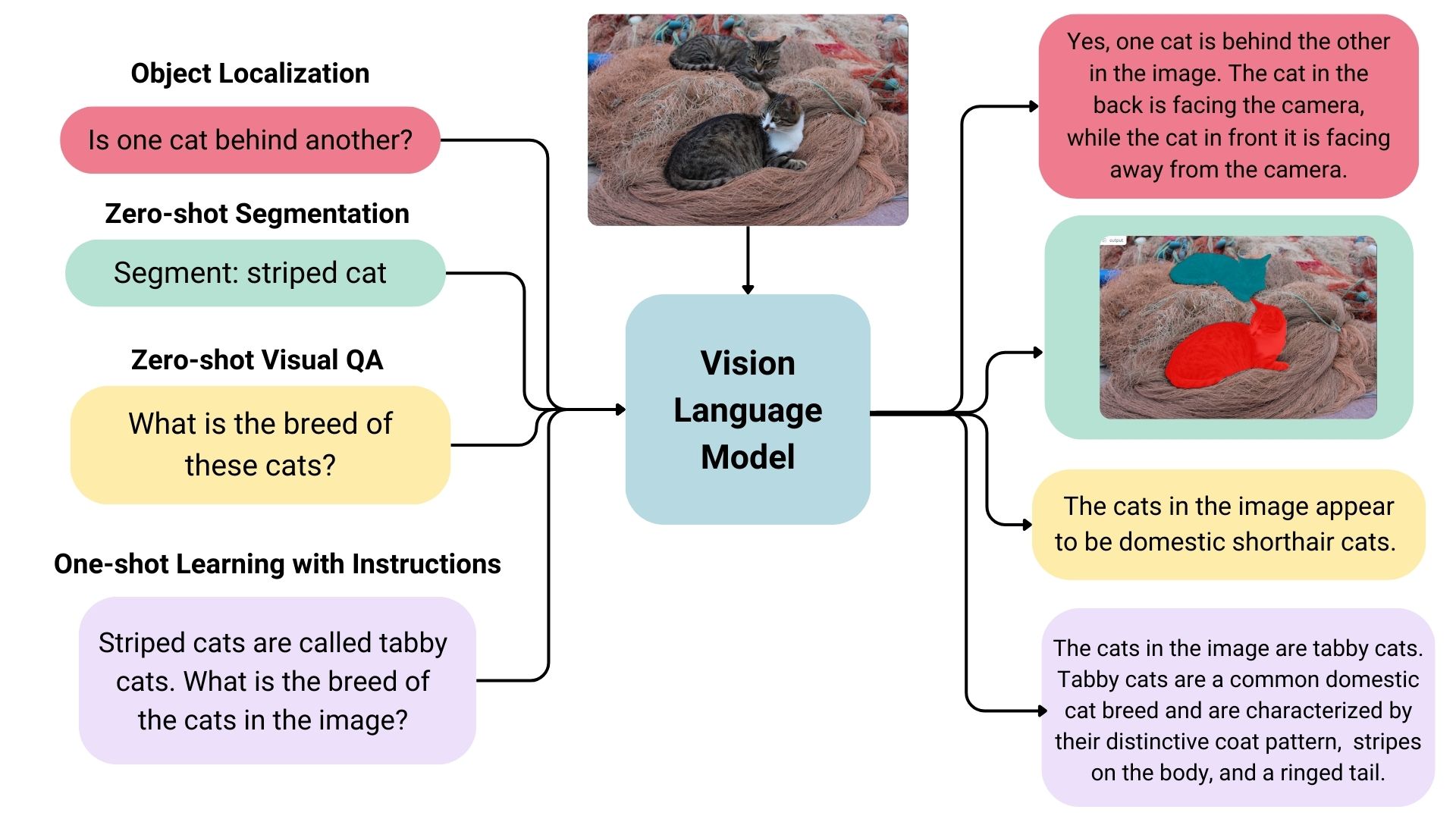
They are trained on vast amounts of data that include images, videos, and text, allowing them to learn patterns and relationships between these modalities. In simple terms, a VLM can look at an image or video and generate a corresponding text description that accurately matches the visual content.
VLMs typically consist of three main components:
- An image model that extracts meaningful visual information,
- A text model that processes and understands natural language,
- A fusion mechanism that combines the representations learned by the image and text models, enabling cross-modal interactions.
Generally speaking, the image model — also known as the vision encoder — extracts visual features from input images and maps them to the language model’s input space, creating visual tokens. The text model then processes and understands natural language by generating text embeddings. Lastly, these visual and textual representations are combined through the fusion mechanism, allowing the model to integrate visual and textual information.
VLMs bring a new level of intelligence to applications by bridging visual and linguistic understanding. Here are some of the applications where VLMs shine:
- Image captions: VLMs can provide automatic descriptions that enrich user experiences, improve searchability, and even enhance visuals for vision impairments.
- Visual answers to questions: VLMs could be integrated into educational tools to help students learn more deeply by allowing them to ask questions about visuals they encounter in learning materials, such as complex diagrams and illustrations.
- Document analysis: VLMs can streamline document review processes, identifying critical information in contracts, reports, or patents much faster than reviewing them manually.
- Image search: VLMs could open up the ability to perform reverse image searches. For example, an e-commerce site might allow users to upload image files that are processed to identify similar products that are available for purchase.
- Content moderation: Social media platforms could benefit from VLMs by identifying and removing harmful or sensitive content automatically before publishing it.
- Robotics: In industrial settings, robots equipped with VLMs can perform quality control tasks by understanding visual cues and describing defects accurately.
This is merely an overview of what VLMs are and the pieces that come together to generate audio descriptions. To get a clearer idea of how VLMs work, let’s look at a few real-world examples that leverage VLM processes.
VLM ExamplesBased on the use cases we covered alone, you can probably imagine that VLMs come in many forms, each with its unique strengths and applications. In this section, we will look at a few examples of VLMs that can be used for a variety of different purposes.
IDEFICS
IDEFICS is an open-access model inspired by Deepmind’s Flamingo, designed to understand and generate text from images and text inputs. It’s similar to OpenAI’s GPT-4 model in its multimodal capabilities but is built entirely from publicly available data and models.
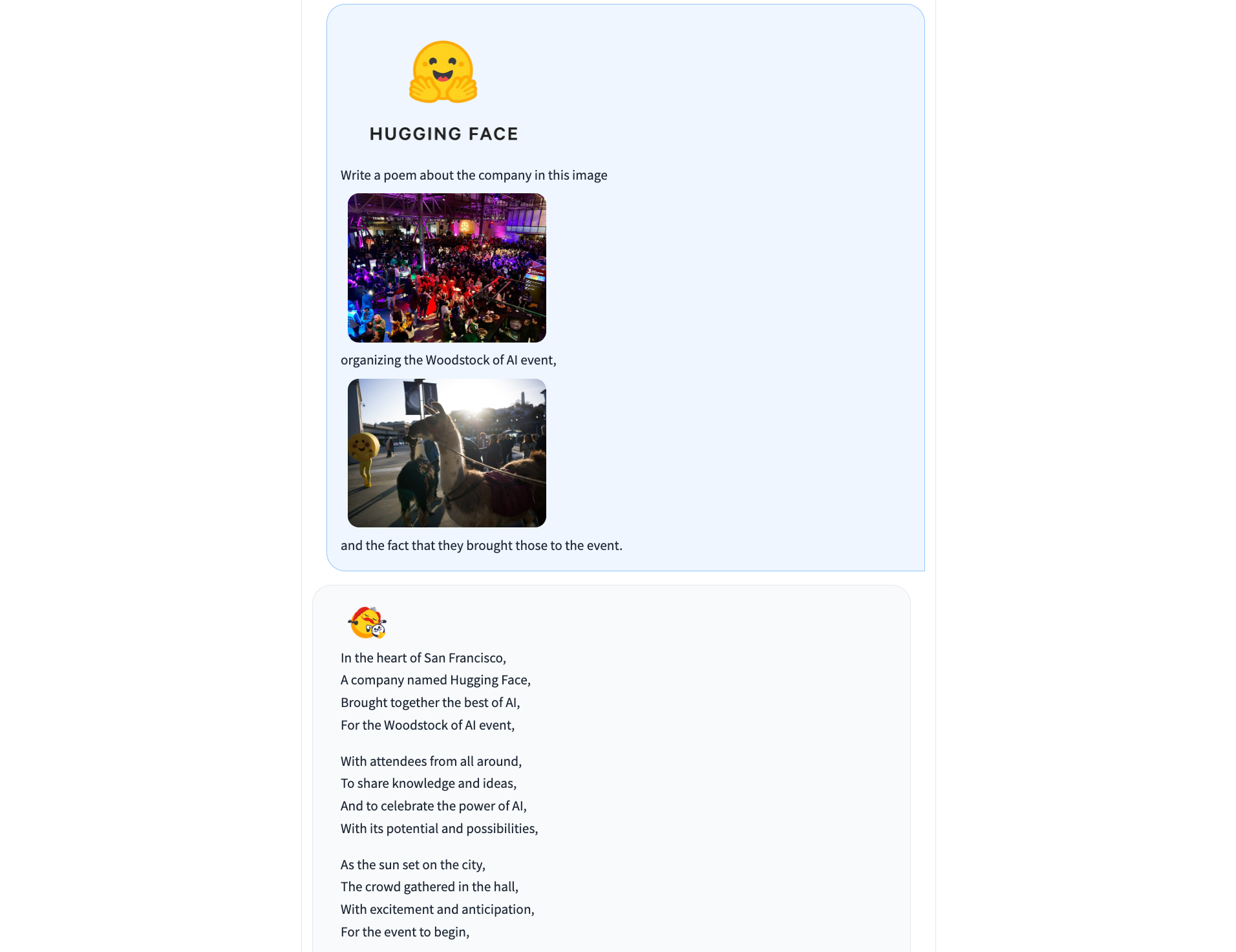
IDEFICS is trained on public data and models — like LLama V1 and Open Clip — and comes in two versions: the base and instructed versions, each available in 9 billion and 80 billion parameter sizes.
The model combines two pre-trained unimodal models (for vision and language) with newly added Transformer blocks that allow it to bridge the gap between understanding images and text. It’s trained on a mix of image-text pairs and multimodal web documents, enabling it to handle a wide range of visual and linguistic tasks. As a result, IDEFICS can answer questions about images, provide detailed descriptions of visual content, generate stories based on a series of images, and function as a pure language model when no visual input is provided.
PaliGemma
PaliGemma is an advanced VLM that draws inspiration from PaLI-3 and leverages open-source components like the SigLIP vision model and the Gemma language model.
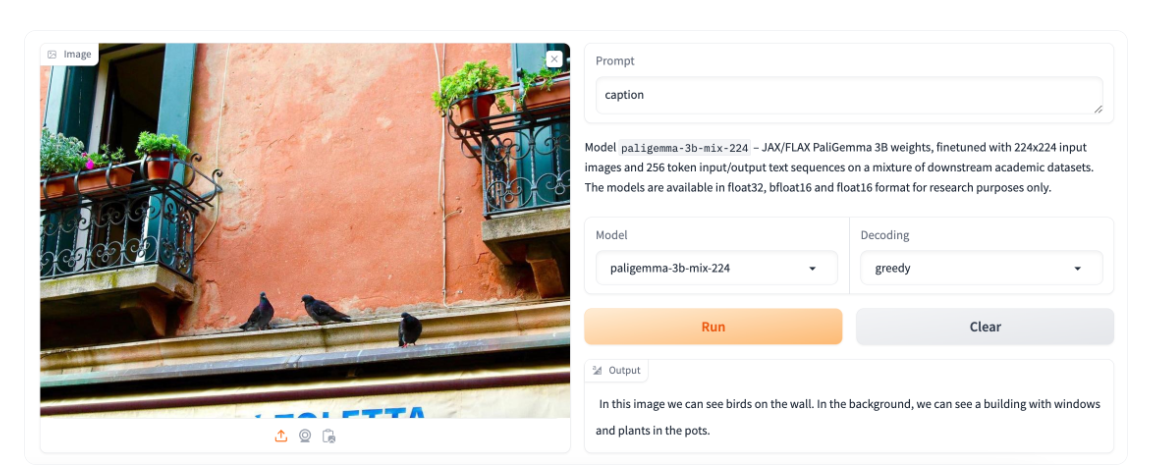
Designed to process both images and textual input, PaliGemma excels at generating descriptive text in multiple languages. Its capabilities extend to a variety of tasks, including image captioning, answering questions from visuals, reading text, detecting subjects in images, and segmenting objects displayed in images.
The core architecture of PaliGemma includes a Transformer decoder paired with a Vision Transformer image encoder that boasts an impressive 3 billion parameters. The text decoder is derived from Gemma-2B, while the image encoder is based on SigLIP-So400m/14.
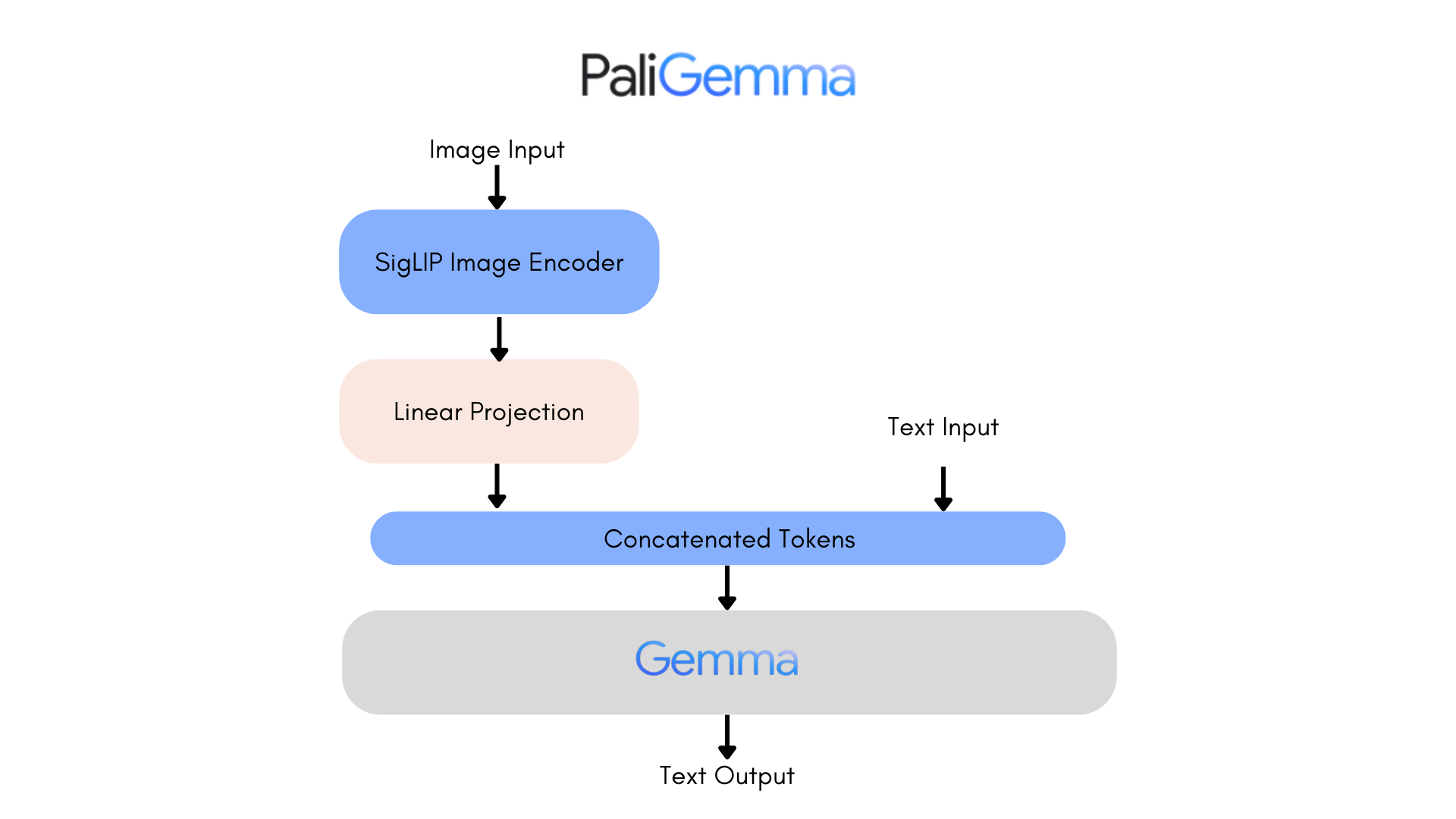
Through training methods similar to PaLI-3, PaliGemma achieves exceptional performance across numerous vision-language challenges.
PaliGemma is offered in two distinct sets:
- General Purpose Models (PaliGemma): These pre-trained models are designed for fine-tuning a wide array of tasks, making them ideal for practical applications.
- Research-Oriented Models (PaliGemma-FT): Fine-tuned on specific research datasets, these models are tailored for deep research on a range of topics.
Phi-3-Vision-128K-Instruct
The Phi-3-Vision-128K-Instruct model is a Microsoft-backed venture that combines text and vision capabilities. It’s built on a dataset of high-quality, reasoning-dense data from both text and visual sources. Part of the Phi-3 family, the model has a context length of 128K, making it suitable for a range of applications.
You might decide to use Phi-3-Vision-128K-Instruct in cases where your application has limited memory and computing power, thanks to its relatively lightweight that helps with latency. The model works best for generally understanding images, recognizing characters in text, and describing charts and tables.
Yi Vision Language (Yi-VL)
Yi-VL is an open-source AI model developed by 01-ai that can have multi-round conversations with images by reading text from images and translating it. This model is part of the Yi LLM series and has two versions: 6B and 34B.
What distinguishes Yi-VL from other models is its ability to carry a conversation, whereas other models are typically limited to a single text input. Plus, it’s bilingual making it more versatile in a variety of language contexts.
Finding And Evaluating VLMsThere are many, many VLMs and we only looked at a few of the most notable offerings. As you commence work on an application with image-to-text capabilities, you may find yourself wondering where to look for VLM options and how to compare them.
There are two resources in the Hugging Face community you might consider using to help you find and compare VLMs. I use these regularly and find them incredibly useful in my work.
Vision Arena
Vision Arena is a leaderboard that ranks VLMs based on anonymous user voting and reviews. But what makes it great is the fact that you can compare any two models side-by-side for yourself to find the best fit for your application.
And when you compare two models, you can contribute your own anonymous votes and reviews for others to lean on as well.
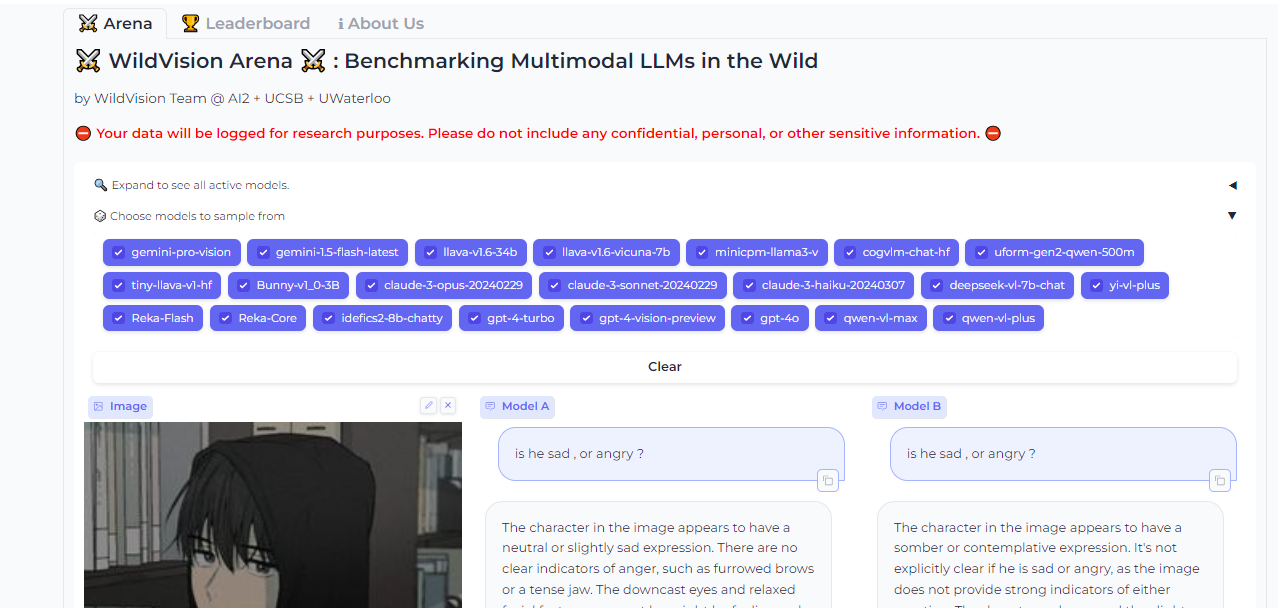
OpenVLM Leaderboard
OpenVLM is another leaderboard hosted on Hugging Face for getting technical specs on different models. What I like about this resource is the wealth of metrics for evaluating VLMs, including the speed and accuracy of a given VLM.
Further, OpenVLM lets you filter models by size, type of license, and other ranking criteria. I find it particularly useful for finding VLMs I might have overlooked or new ones I haven’t seen yet.
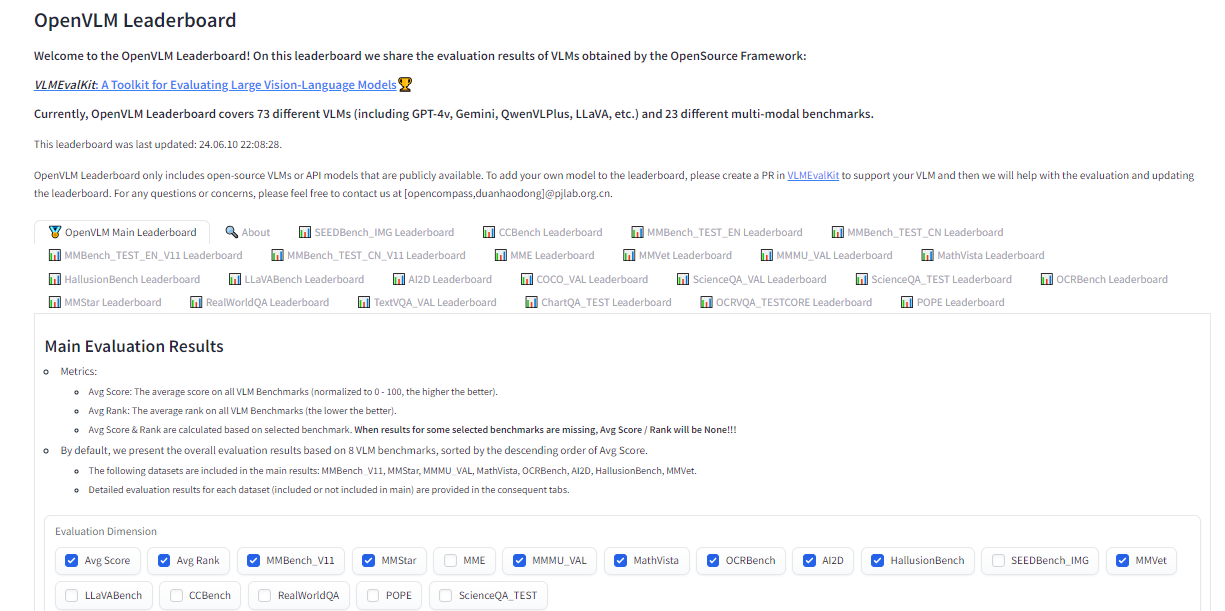
Earlier, I mentioned that the app we are about to build will use vision-language models to generate written descriptions of images, which are then read aloud. The technology that handles converting text to audio speech is known as text-to-speech synthesis or simply text-to-speech (TTS).
TTS converts written text into synthesized speech that sounds natural. The goal is to take published content, like a blog post, and read it out loud in a realistic-sounding human voice.
So, how does TTS work? First, it breaks down text into the smallest units of sound, called phonemes, and this process allows the system to figure out proper word pronunciations. Next, AI enters the mix, including deep learning algorithms trained on hours of human speech data. This is how we get the app to mimic human speech patterns, tones, and rhythms — all the things that make for “natural” speech. The AI component is key as it elevates a voice from robotic to something with personality. Finally, the system combines the phoneme information with the AI-powered digital voice to render the fully expressive speech output.
The result is automatically generated speech that sounds fairly smooth and natural. Modern TTS systems are extremely advanced in that they can replicate different tones and voice inflections, work across languages, and understand context. This naturalness makes TTS ideal for humanizing interactions with technology, like having your device read text messages out loud to you, just like Apple’s Siri or Microsoft’s Cortana.
TTS ExamplesBased on the use cases we covered alone, you can probably imagine that VLMs come in many forms, each with its unique strengths and applications. In this section, we will look at a few examples of VLMs that can be used for a variety of different purposes.
Just as we took a moment to review existing vision language models, let’s pause to consider some of the more popular TTS resources that are available.
Bark
Straight from Bark’s model card in Hugging Face:
“Bark is a transformer-based text-to-audio model created by Suno. Bark can generate highly realistic, multilingual speech as well as other audio — including music, background noise, and simple sound effects. The model can also produce nonverbal communication, like laughing, sighing, and crying. To support the research community, we are providing access to pre-trained model checkpoints ready for inference.”
The non-verbal communication cues are particularly interesting and a distinguishing feature of Bark. Check out the various things Bark can do to communicate emotion, pulled directly from the model’s GitHub repo:
[laughter][laughs][sighs][music][gasps][clears throat]
This could be cool or creepy, depending on how it’s used, but reflects the sophistication we’re working with. In addition to laughing and gasping, Bark is different in that it doesn’t work with phonemes like a typical TTS model:
“It is not a conventional TTS model but instead a fully generative text-to-audio model capable of deviating in unexpected ways from any given script. Different from previous approaches, the input text prompt is converted directly to audio without the intermediate use of phonemes. It can, therefore, generalize to arbitrary instructions beyond speech, such as music lyrics, sound effects, or other non-speech sounds.”
Coqui
Coqui/XTTS-v2 can clone voices in different languages. All it needs for training is a short six-second clip of audio. This means the model can be used to translate audio snippets from one language into another while maintaining the same voice.
At the time of writing, Coqui currently supports 16 languages, including English, Spanish, French, German, Italian, Portuguese, Polish, Turkish, Russian, Dutch, Czech, Arabic, Chinese, Japanese, Hungarian, and Korean.
Parler-TTS
Parler-TTS excels at generating high-quality, natural-sounding speech in the style of a given speaker. In other words, it replicates a person’s voice. This is where many folks might draw an ethical line because techniques like this can be used to essentially imitate a real person, even without their consent, in a process known as “deepfake” and the consequences can range from benign impersonations to full-on phishing attacks.
But that’s not really the aim of Parler-TTS. Rather, it’s good in contexts that require personalized and natural-sounding speech generation, such as voice assistants and possibly even accessibility tooling to aid visual impairments by announcing content.
TTS Arena Leaderboard
Do you know how I shared the OpenVLM Leaderboard for finding and comparing vision language models? Well, there’s an equivalent leadership for TTS models as well over at the Hugging Face community called TTS Arena.
TTS models are ranked by the “naturalness” of their voices, with the most natural-sounding models ranked first. Developers like you and me vote and provide feedback that influences the rankings.
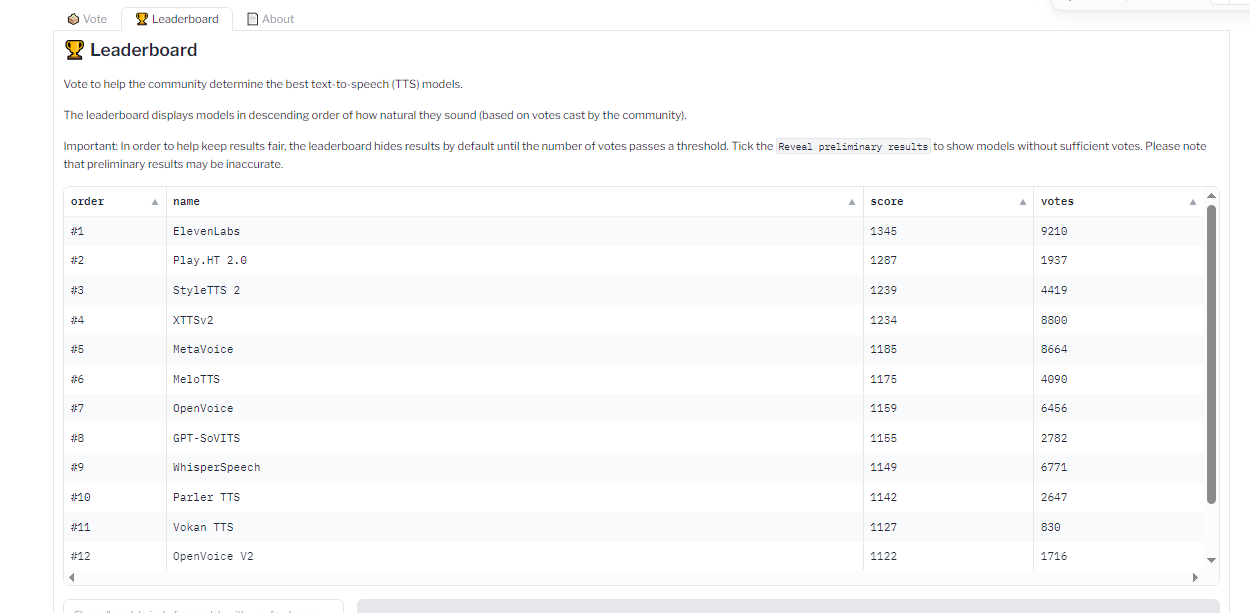
What we just looked at are TTS models that are baked into whatever app we’re making. However, some models are consumable via API, so it’s possible to get the benefits of a TTS model without the added bloat if a particular model is made available by an API provider.
Whether you decide to bundle TTS models in your app or integrate them via APIs is totally up to you. There is no right answer as far as saying one method is better than another — it’s more about the app’s requirements and whether the dependability of a baked-in model is worth the memory hit or vice-versa.
All that being said, I want to call out a handful of TTS API providers for you to keep in your back pocket.
ElevenLabs
ElevenLabs offers a TTS API that uses neural networks to make voices sound natural. Voices can be customized for different languages and accents, leading to realistic, engaging voices.
Try the model out for yourself on the ElevenLabs site. You can enter a block of text and choose from a wide variety of voices that read the submitted text aloud.
Colossyan
Colossyan’s text-to-speech API converts text into natural-sounding voice recordings in over 70 languages and accents. From there, the service allows you to match the audio to an avatar to produce something like a complete virtual presentation based on your voice — or someone else’s.
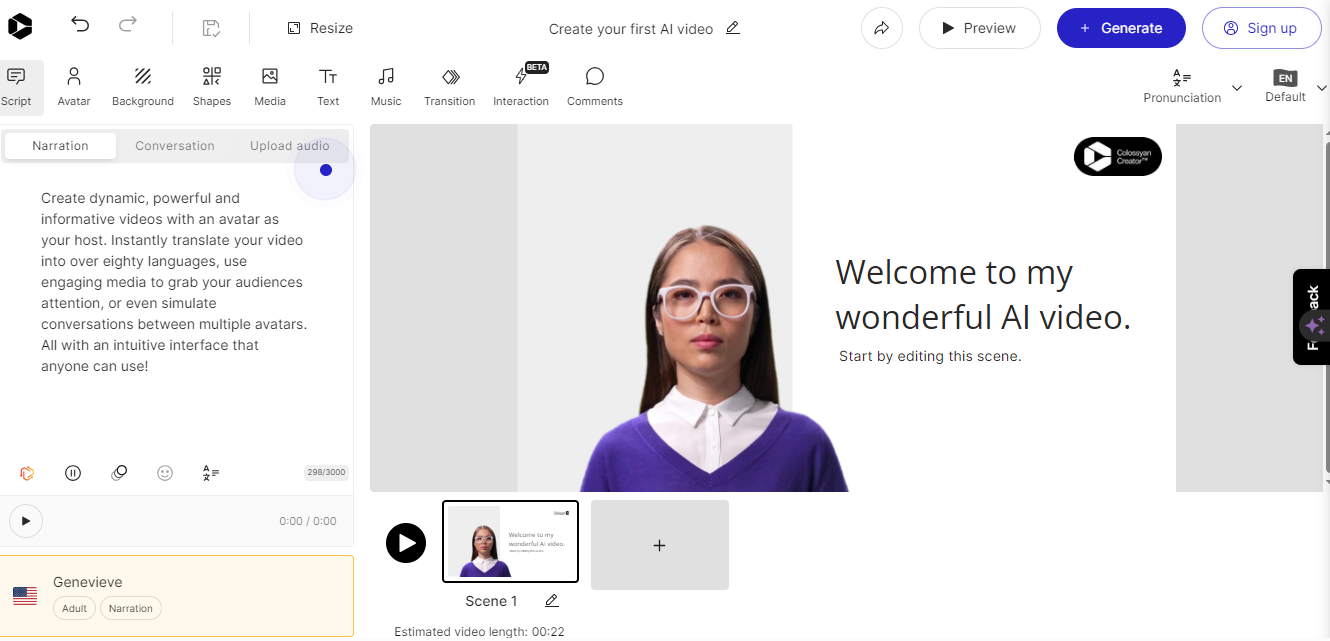
Once again, this is encroaching on deepfake territory, but it’s really interesting to think of Colossyan’s service as a virtual casting call for actors to perform off a script.
Murf.ai
Murf.ai is yet another TTS API designed to generate voiceovers based on real human voices. The service provides a slew of premade voices you can use to generate audio for anything from explainer videos and audiobooks to course lectures and entire podcast episodes.
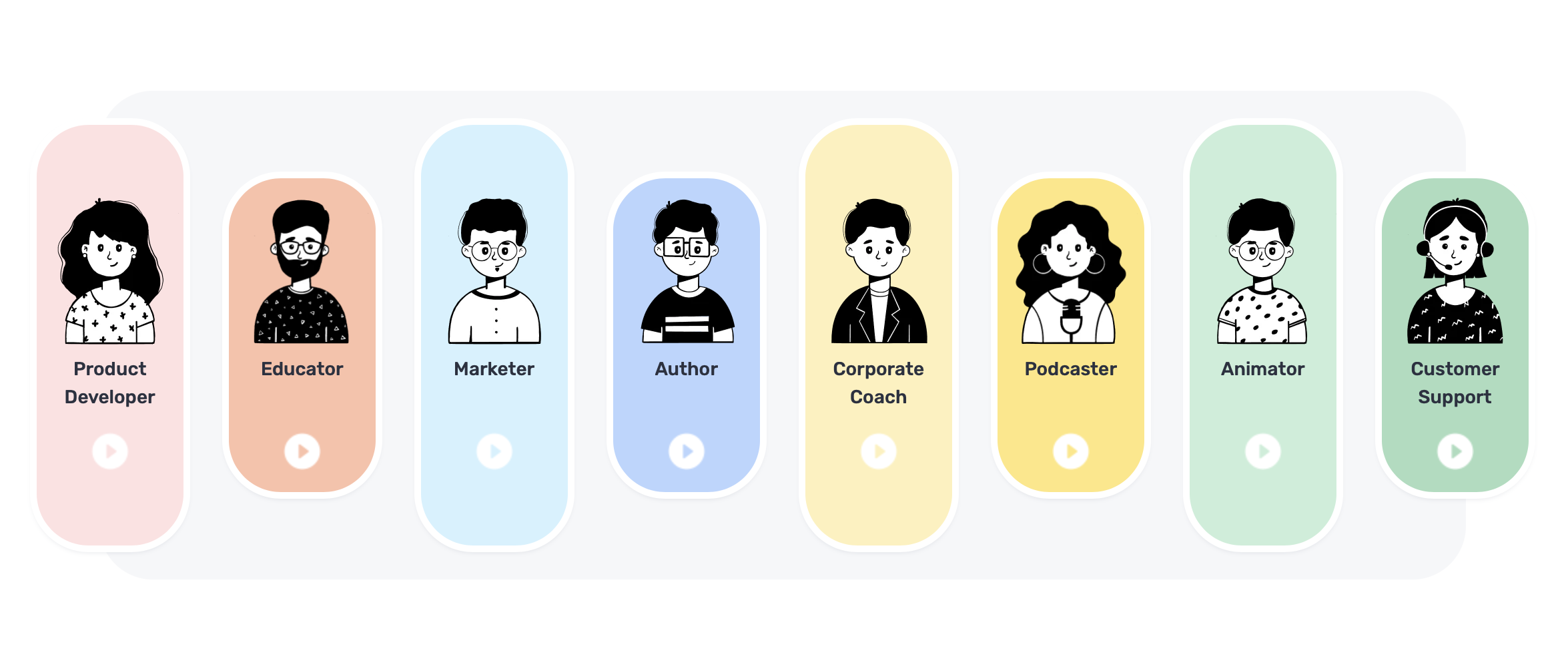
Amazon Polly
Amazon has its own TTS API called Polly. You can customize the voices using lexicons and Speech Synthesis Markup (SSML) tags for establishing speaking styles with affordances for adjusting things like pitch, speed, and volume.
PlayHT
The PlayHT TTS API generates speech in 142 languages. Type what you want it to say, pick a voice, and download the output as an MP3 or WAV file.
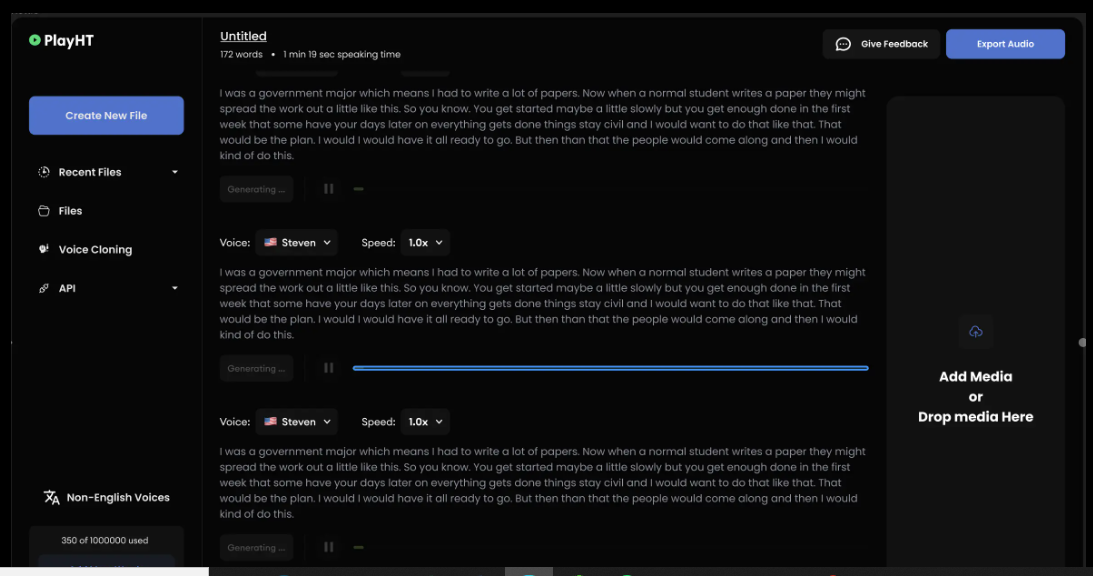
So far, we have discussed the two primary components for generating audio from text: vision-language models and text-to-speech models. We’ve covered what they are, where they fit into the process of generating real-sounding speech, and various examples of each model.
Now, it’s time to apply those concepts to the app we are building in this tutorial (and will improve in a second tutorial). We will use a VLM so the app can glean meaning and context from images, a TTS model to generate speech that mimics a human voice, and then integrate our work into a user interface for submitting images that will lead to generated speech output.
I have decided to base our work on a VLM by Salesforce called BLIP, a TTS model from Kakao Enterprise called VITS, and Gradio as a framework for the design interface. I’ve covered Gradio extensively in other articles, but the gist is that it is a Python library for building web interfaces — only it offers built-in tools for working with machine learning models that make Gradio ideal for a tutorial like this.
You can use completely different models if you like. The whole point is less about the intricacies of a particular model than it is to demonstrate how the pieces generally come together.
Oh, and one more detail worth noting: I am working with the code for all of this in Google Collab. I’m using it because it’s hosted and ideal for demonstrations like this. But you can certainly work in a more traditional IDE, like VS Code.
Installing Libraries
First, we need to install the necessary libraries:
#python
!pip install gradio pillow transformers scipy numpy
We can upgrade the transformers library to the latest version if we need to:
#python
!pip install --upgrade transformers
Not sure if you need to upgrade? Here’s how to check the current version:
#python
import transformers
print(transformers.__version__)
OK, now we are ready to import the libraries:
#python
import gradio as gr
from PIL import Image
from transformers import pipeline
import scipy.io.wavfile as wavfile
import numpy as np
These libraries will help us process images, use models on the Hugging Face hub, handle audio files, and build the UI.
Creating Pipelines
Since we will pull our models directly from Hugging Face’s model hub, we can tap into them using pipelines. This way, we’re working with an API for tasks that involve natural language processing and computer vision without carrying the load in the app itself.
We set up our pipeline like this:
#python
caption_image = pipeline("image-to-text", model="Salesforce/blip-image-captioning-large")
This establishes a pipeline for us to access BLIP for converting images into textual descriptions. Again, you could establish a pipeline for any other model in the Hugging Face hub.
We’ll need a pipeline connected to our TTS model as well:
#python
Narrator = pipeline("text-to-speech", model="kakao-enterprise/vits-ljs")
Now, we have a pipeline where we can pass our image text to be converted into natural-sounding speech.
Converting Text to Speech
What we need now is a function that handles the audio conversion. Your code will differ depending on the TTS model in use, but here is how I approached the conversion based on the VITS model:
#python
def generate_audio(text):
# Generate speech from the input text using the Narrator (VITS model)
Narrated_Text = Narrator(text)
# Extract the audio data and sampling rate
audio_data = np.array(Narrated_Text["audio"][0])
sampling_rate = Narrated_Text["sampling_rate"]
# Save the generated speech as a WAV file
wavfile.write("generated_audio.wav", rate=sampling_rate, data=audio_data)
# Return the filename of the saved audio file
return "generated_audio.wav"
That’s great, but we need to make sure there’s a bridge that connects the text that the app generates from an image to the speech conversion. We can write a function that uses BLIP to generate the text and then calls the generate_audio() function we just defined:
#python
def caption_my_image(pil_image):
# Use BLIP to generate a text description of the input image
semantics = caption_image(images=pil_image)[0]["generated_text"]
# Generate audio from the text description
return generate_audio(semantics)
Building The User Interface
Our app would be pretty useless if there was no way to interact with it. This is where Gradio comes in. We will use it to create a form that accepts an image file as an input and then outputs the generated text for display as well as the corresponding file containing the speech.
#python
main_tab = gr.Interface(
fn=caption_my_image,
inputs=[gr.Image(label="Select Image", type="pil")],
outputs=[gr.Audio(label="Generated Audio")],
title=" Image Audio Description App",
description="This application provides audio descriptions for images."
)
# Information tab
info_tab = gr.Markdown("""
# Image Audio Description App
### Purpose
This application is designed to assist visually impaired users by providing audio descriptions of images. It can also be used in various scenarios such as creating audio captions for educational materials, enhancing accessibility for digital content, and more.
### Limits
- The quality of the description depends on the image clarity and content.
- The application might not work well with images that have complex scenes or unclear subjects.
- Audio generation time may vary depending on the input image size and content.
### Note
- Ensure the uploaded image is clear and well-defined for the best results.
- This app is a prototype and may have limitations in real-world applications.
""")
# Combine both tabs into a single app
demo = gr.TabbedInterface(
[main_tab, info_tab],
tab_names=["Main", "Information"]
)
demo.launch()
The interface is quite plain and simple, but that’s OK since our work is purely for demonstration purposes. You can always add to this for your own needs. The important thing is that you now have a working application you can interact with.
At this point, you could run the app and try it in Google Collab. You also have the option to deploy your app, though you’ll need hosting for it. Hugging Face also has a feature called Spaces that you can use to deploy your work and run it without Google Collab. There’s even a guide you can use to set up your own Space.
Here’s the final app that you can try by uploading your own photo:
Coming Up…We covered a lot of ground in this tutorial! In addition to learning about VLMs and TTS models at a high level, we looked at different examples of them and then covered how to find and compare models.
But the rubber really met the road when we started work on our app. Together, we made a useful tool that generates text from an image file and then sends that text to a TTS model to convert it into speech that is announced out loud and downloadable as either an MP3 or WAV file.
But we’re not done just yet! What if we could glean even more detailed information from images and our app not only describes the images but can also carry on a conversation about them?
Sounds exciting, right? This is exactly what we’ll do in the second part of this tutorial.
Can Your Domain Name Make Or Break Your Business? Here’s How To Choose Wisely!
Quantum Computers: Mysterious Export Bans and the Future of Encryption
As quantum computing slowly edges closer to disrupting encryption standards, governments are imposing export bans with peculiar undertones. This article explores the reasons behind these restrictions, the basics of quantum computing, and why we need quantum-resistant encryption to secure our digital future.

In recent months, a mysterious wave of export controls on quantum computers has swept across the globe. Countries like the UK, France, Spain, and the Netherlands have all enacted identical restrictions, limiting the export of quantum computers with 34 or more qubits and error rates below a specific threshold. These regulations appeared almost overnight, stirring confusion and speculation among scientists, tech experts, and policymakers.
The curious aspect of these export bans is not just their sudden implementation, but the lack of scientific basis provided. Quantum computers today, while groundbreaking in their potential, are still largely experimental. They are far from the capability needed to break current encryption standards. This has cast some doubts about the necessity of these restrictions. A freedom of information request by New Scientist seeking the rationale behind these controls was declined by the UK government, citing national security concerns, adding another layer of mystery.
The uniformity of these export controls across different countries hints at some form of secret international consensus. The European Commission has clarified that the measures are national rather than EU-wide, suggesting that individual nations reached similar conclusions independently. However, identical limitations point to a deeper, coordinated effort. The French Embassy mentioned that the limits were the result of multilateral negotiations conducted over several years under the Wassenaar Arrangement, an export control regime for arms and technology. This statement, though, only deepens the mystery as no detailed scientific analysis has been publicly released to justify the chosen thresholds.
Quantum computing is radically different from classical computing, as it leverages the principles of quantum mechanics to process information in fundamentally new ways. To understand its potential and the challenges it poses, we need to take a look at how quantum computers operate.
Classical computers use bits as the smallest unit of information, which can be either 0 or 1. In contrast, quantum computers use quantum bits, or qubits, which can exist in a state of 0, 1, or both simultaneously, thanks to a property called superposition. This means that a quantum computer with n qubits can represent 2^n possible states simultaneouslyoffering exponential growth in processing power compared to classical bits.
Another principle of quantum computing is entanglement, a phenomenon where qubits become interlinked and the state of one qubit can depend on the state of another, regardless of distance. This property allows quantum computers to perform complex computations more efficiently than classical computers.
However, building and maintaining a quantum computer is a considerable challenge. Qubits are incredibly sensitive to their environment, and maintaining their quantum state requires extremely low temperatures and isolation from external noise. Quantum decoherence (the loss of quantum state information due to environmental interaction) is a significant obstacle. Error rates in quantum computations are currently high, requiring the use of error correction techniques, which themselves require additional qubits.
To sum up, current quantum computers are capable of performing some computations but limited by their error rates. Researchers are working on developing more stable and scalable quantum processors, improving error correction methods, and finding new quantum algorithms that can outperform classical ones. Yet, these milestones are just the beginning, and practical, widespread use of quantum computers remains science fiction for now.
Advances in quantum computing pose a significant threat to current encryption standards, which rely on the difficulty of certain mathematical problems to ensure security. To understand the gravity of this threat, we must first understand how encryption works.
One of the most widely used encryption methods today is RSA (RivestShamirAdleman), a public-key cryptosystem. RSA encryption is based on the practical difficulty of factoring the product of two large prime numbers. A public key is used to encrypt messages, while a private key is used to decrypt them. The security of RSA relies on the fact that, while it is easy to multiply large primes, it is extraordinarily hard to factor their product back into the original primes without the private key.
Classical computers, even the most powerful ones, struggle with this factoring problem. The best-known algorithm for factoring large numbers on classical computers is the general number field sieve, which can take an infeasibly long time to factor the large numbers used in RSA encryption. For instance, factoring a 2048-bit RSA key using classical methods would take billions of years.
Enter Shor's algorithm, a quantum algorithm developed by mathematician Peter Shor in 1994. This algorithm can factor large numbers exponentially faster than the best-known classical algorithmsand a sufficiently powerful quantum computer could break RSA encryption within a reasonable timeframe by applying it.
RSA encryption underpins the security of numerous systems, including secure web browsing with HTTPS, email encryption, and many more. If a quantum computer were capable of running Shor's algorithm on large enough integers, it could potentially decrypt any data encrypted with RSA, leading to a catastrophic loss of privacy and security.
To understand how (un)practical this threat is, we must consider the current requirements for breaking RSA encryption. According to research by Yan et al. 2022, breaking RSA 2048 would require 372 physical qubits, assuming significant advancements in error correction and stability. This number highlights the substantial leap needed from today's quantum computers. Processors like IBM's 127-qubit Hummingbird still face high error rates and short coherence times, making them far from achieving the capability required to break RSA encryption.
As quantum computing gets closer to cracking current encryption standards, governments worldwide are taking precautions and imposing export bans, hoping to prevent adversaries from gaining a strategic advantage.
One implication is clear: the need for quantum-resistant encryption methods becomes increasingly urgent. Researchers are already developing new cryptographic algorithms designed to withstand quantum attacks, ensuring that our data remains secure in a post-quantum world. For example, lattice-based cryptography, which relies on mathematical problems that are particularly hard to solve, shows promise as a quantum-resistant solution.
Over time, it is likely that the convergence of quantum computing and artificial intelligence will cause the singularity loading bar to progress further towards the point where technological growth becomes irreversible and human civilization will be changed forever. Although the mysterious export bans on quantum computers with 34 qubits or more may seem overly cautious or premature, they might clandestinely indicate that we are at the beginning of the quantum era.





